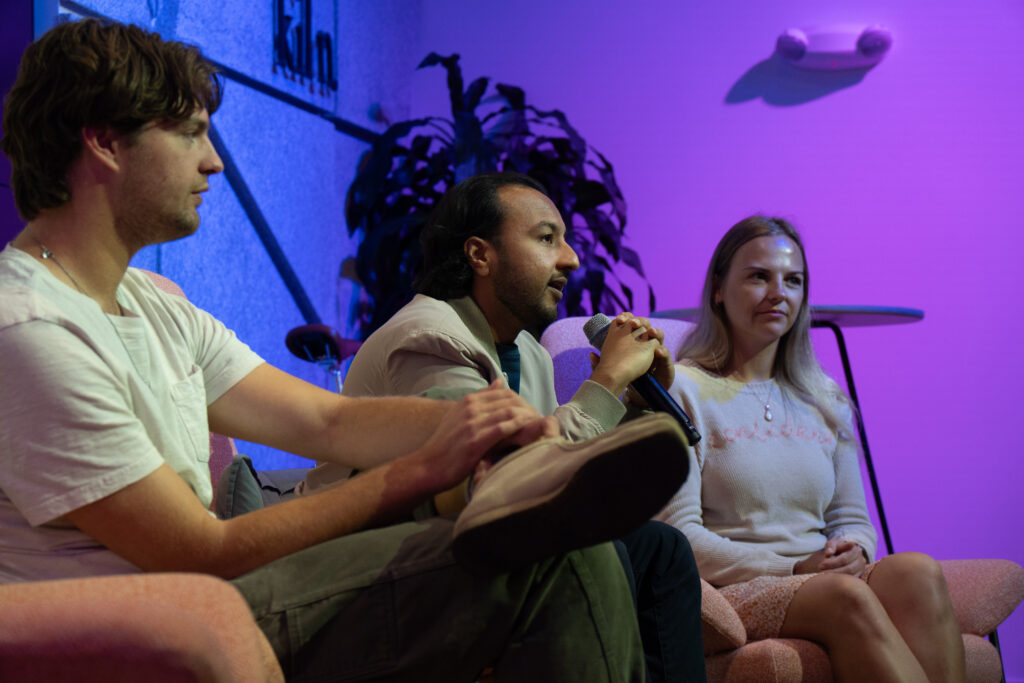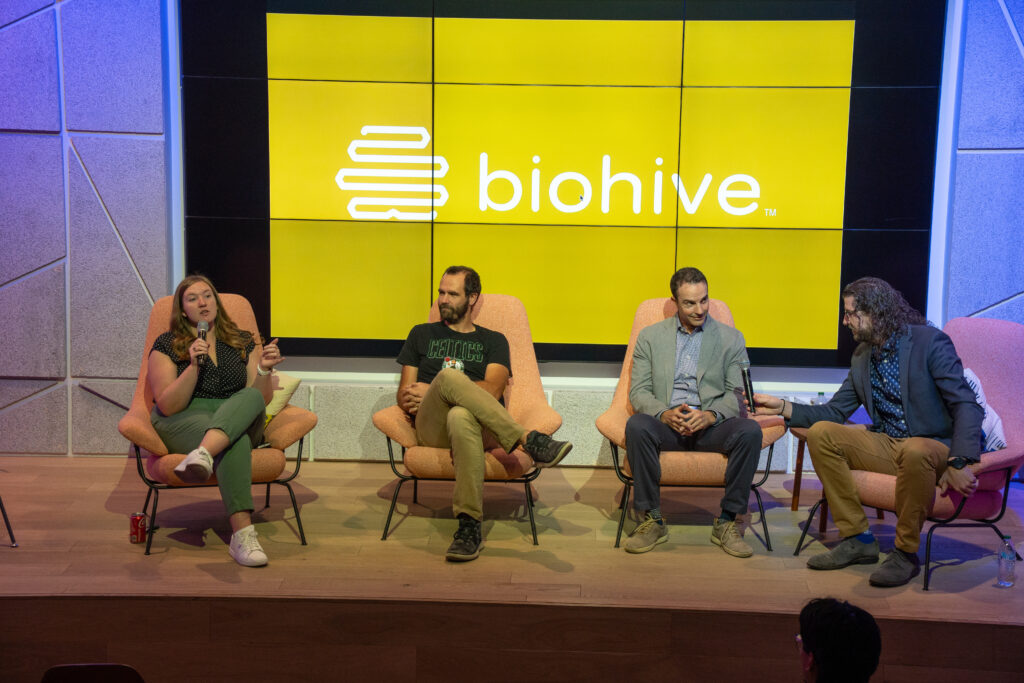BioHive’s student chapters recently had the opportunity to hear from a panel of experts from across Utah’s thriving life sciences community. A huge thank-you to our panelists, Kyle Hansen, Brian Harris, Amanda LeMatty, Colton McEwan, PMP, Kapil Sharma, MS, MBA, MSF, and Carmen Kivisild, PhD, for sharing their time and insights.
Our panel brought together innovators across medical devices, biotech startups, and community accelerators. Together, they spoke candidly about career pivots, overcoming setbacks, and why Utah’s life sciences ecosystem is a uniquely rewarding place to build a mission-driven career.
For students and early-career professionals who couldn’t attend, we’ve got you covered. You can still catch the key takeaways and actionable advice from the discussion; it’s a must-read for anyone investing in their own professional growth.
1. Treat Your Career Like a Lab
Our panelists didn’t follow a perfectly laid out plan to get where they are today; an internship opened a door, a detour revealed a better fit, or a layoff forced the next chapter. The throughline wasn’t certainty…it was iteration. Be OPEN to every possibility that comes your way.
👉 Action: Run “small experiments.” Each semester (or quarter), try one new role, skill, or setting: lab volunteering, a student competition like Bench-to-Bedside, a regulatory short course, or a startup project. Keep what works, discard what doesn’t.
“Biology is messy and so are careers. The goal isn’t perfection, it’s learning quickly.” – Colton McEwan
2. Utah Is Your Launchpad – Use the Whole Runway
Utah’s life science ecosystem spans medical devices, diagnostics, therapeutics, imaging, and digital health. That diversity equals options for your career. Your “dream job” may not exist yet, but the building blocks are here. Get to know the landscape, tap into the community and put yourself out there.
👉 Action: Map the landscape. Pick five Utah organizations across different sub-sectors (e.g., accelerators, device companies, healthtech, research labs). Attend one event, office hour or reach out to one employee from each organization over the next 60 days.
“The one thing we will always have is healthcare. There will always be sick people and the desire to live healthier lives.” – Amanda LeMatty
3. As a Student – Show Up Early, and Often
Our panelists emphasized how far simply showing up goes, especially while you’re still a student. People are unusually generous with their time and energy when it comes to those who raise their hand for an opportunity to learn. Take the time to invest in yourself, and in your future.
👉 Action: Schedule two informational interviews per month. Keep outreach short, personal, and specific; close with, “Who else would you recommend I speak with?”
“One thing I regret is not understanding the opportunities being a student can bring you.” – Carmen Kivisild

4. Make AI Your Co-Pilot, Not Your Competitor
AI is already trimming busywork: triaging images, cleaning datasets, summarizing CRO reports, freeing experts up to focus on higher-order judgment and patient impact. The ones on top won’t be those who ignore AI; they’ll be those who wield it responsibly.
👉 Action: Pick one workflow to augment (literature scans, QC checklists, draft protocols). Document the before/after time saved and quality gained.
“AI can get you to a place where you are saving time to do the work you really want to do.” – Kyle Hansen
5. Embrace Challenges, Head On
Speakers were frank about layoffs, funding delays, and bias in male-dominated spaces. The answer wasn’t toxic positivity; it was community and candor. Challenges are a part of every career path, but facing up to those challenges is the difference between failure and success. Failure is part of the process when you’re truly innovating. Learn from every experience – no matter the outcome – and keep going. Resilience is a skill that can be learned, and practiced.
👉 Action: Start a resilience log. Each week, note one setback, one lesson, and one assist (person who helped). Then pay that assist forward.
“In the end, it was a failure, but at the same time the process is what I really learned from.” – Brian Harris
6. Network Like a Scientist: Hypothesize, Test, Repeat
Cold outreach works when it’s thoughtful. The best messages referenced a talk, paper, or product, then asked for 15 – 20 minutes to dig into one concrete topic. Following up politely and offering value back turn conversations into relationships. Don’t be afraid to reach out; the worst thing that can happen is getting a “no”.
👉 Action (15-minute template):
- Hook: One sentence of genuine context (“I heard your panel on biomedical devices.”)
- Why you: One line on your focus (“BME student exploring regulatory pathways.”)
- Ask: One specific question or decision you’re facing
Close: Suggest two times to meet; end with “If not you, who?”
“Go meet some people and learn from their experiences.” – Kapil K. Sharma

The BioHive Takeaway
The life sciences industry is resilient because human health will always matter. Your path won’t be linear—but it can be intentional. Show up as a student. Run small experiments. Make AI amplify your judgment. Build relationships that outlast job titles. Measure your impact.
Most of all, treat your career like the science you love: form a hypothesis, run the test, learn fast, and iterate with heart.

